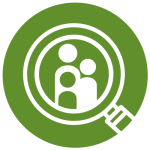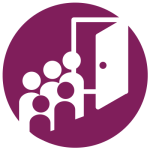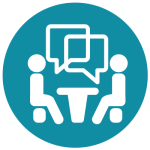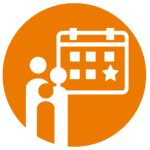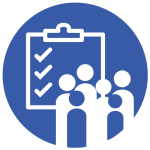Health literacy can support the participant through their clinical trial journey.
1. DISCOVERY
Public awareness of, education about, and access to clinical research
2. RECRUITMENT
Targeted, relevant, written and verbal invitations to join research
3. CONSENT
Clear written and verbal conversations about informed consent to research participation
4. ON STUDY
Clear information about ongoing research procedures, data collection and reporting
5. END OF STUDY
Plain language summaries, results reports, and research publications
There are opportunities to integrate health literacy practices and principles at every point along this journey.
A person’s journey through a clinical trial generally consists of five categories:
1) Discovery – when they learn about research
2) Recruitment – when they are asked to join a specific study
3) Consent – when they are guided through a consent process to decide whether the study is right for them
4) On-Study – when they begin their study visits and go through study procedures as participants
5) End of Study – when they reach the end of their time in the research study

Communicate with potential and enrolled participants throughout the clinical trial life cycle in ways that are designed to be understood:
- Choose words to describe research information so the intended audience understands as quickly, easily and completely as possible (known as plain language)
- Address numbers and math concepts (known as numeracy) through clear methods that include not only statistics and probabilities, but also calendar/scheduling information, volumes and doses, and timing/frequency.
- Apply imaging and clear design techniques to clinical research content
- Use interactive techniques like teach-back and paraphrasing whenever possible to reaffirm clinical research concepts via verbal and in-person encounters.
- Take an approach to communication that demonstrates cultural considerations, respect, and a partnership with the potential participant and their community.
- Perform usability testing to assess whether the planned communication achieves its intended goal.
Everyone can use health literacy to communicate
These techniques work best when adopted by everyone who creates materials for a research study or interacts with participants, including but not limited to:
- Investigators and study teams
- Sponsors and funders
- Institutional Review Boards
Regulations around the world support clear communication about research:
- United States: comprehensive, concise, clear, relevant and understandable consents (45 C.F.R. § 46.101 et. seq.)
- European Union : understandable clinical trial results summaries (EU Clinical Trials Regulation (No 536/2014), Article 29 and 37(4))
Scroll through the life-cycle:
Discovery > Recruitment > Consent > On Study > End of Study


